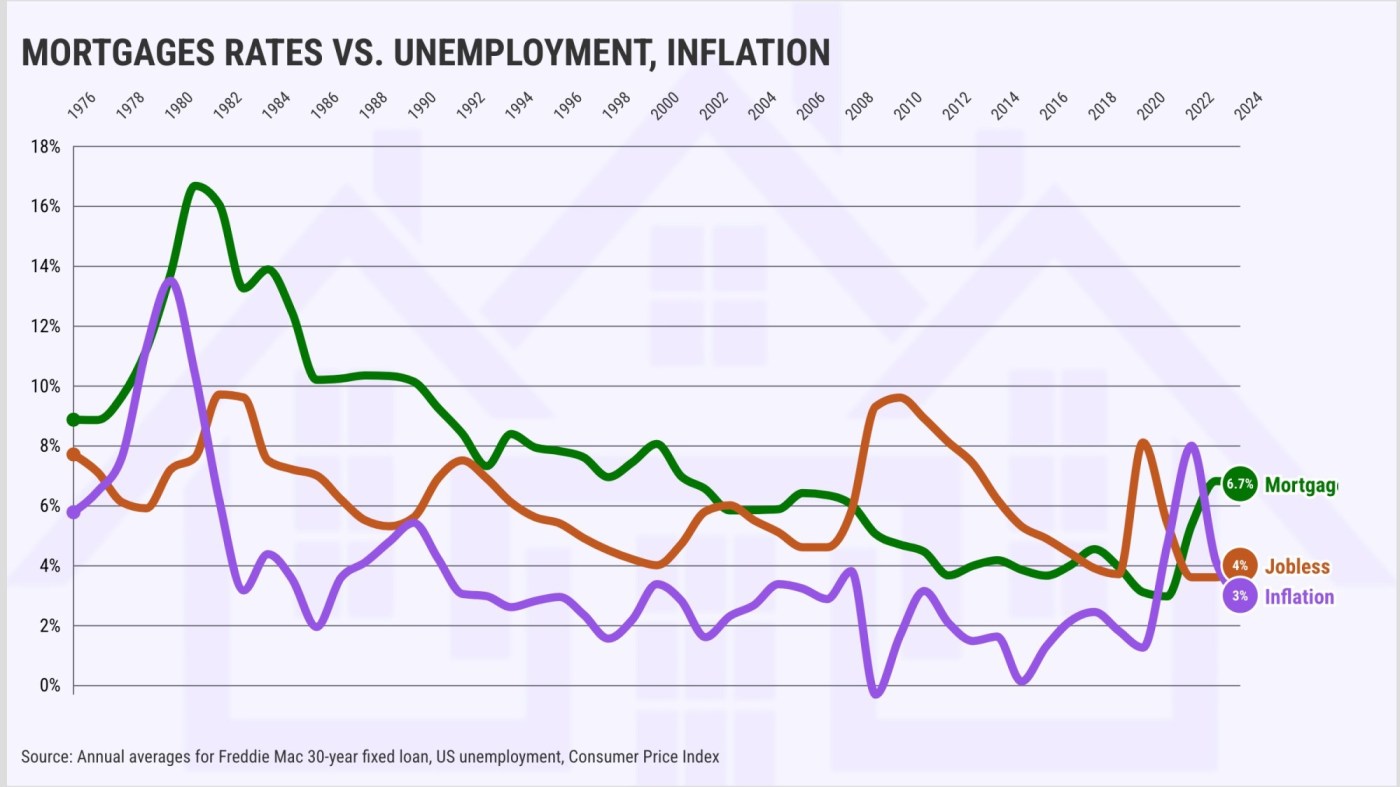“Numerology” tries to find reality within various economic and real estate trends measurements.
Buzz: Why do real estate people root for falling mortgage rates?
Source: My trusty spreadsheet reviewed stats on home loans, home prices, jobs and inflation dating to 1976. By the way, that was the year Jimmy Carter, the former US president who died Dec. 29 at age 100, was elected to the White House.
Fuzzy math: Cheaper mortgages may increase affordability but frequently occur when economic troubles are brewing.
Topline
Related Articles
Workforce housing real estate firm buys two San Jose apartment complexes
Bay Area homeless population rose to a record 38,891 people in 2024
This housing program keeps California college students off the streets and in the classroom
How to find emergency California student housing: A resource guide
Three vintage trailers, less than 5 miles from California beach, list for $299,000 each
Let’s divide 49 years of data into two, using the 30-year fixed mortgage rate tracked by Freddie Mac.
The benchmark rate fell in 30 of those years, with an average decline of 0.6 percentage points. In contrast, rates rose on average by 0.9 percentage points in the other 19 years.
In those years when loans got cheaper, mortgage rates averaged 7.3%. That’s a deal compared to the 8.2% when mortgages got more expensive.
Reality
What’s often forgotten is that low mortgage rates frequently parallel higher joblessness. Remember, you need a solid paycheck to buy a home.
US unemployment averaged 6.4% in the years when mortgage rates fell, but it averaged 5.5% when mortgages became more expensive.
Hirings mean more demand for money. On the contrary, firings force consumers to cut back.
Now, this economic weakness can chill inflation – one driver of mortgage rates.
When rates were down, the Consumer Price Index was rising 3% a year. When rates rose, inflation averaged 5%.
Bottom line
Falling mortgage rates are no housing panacea.
The sluggish business climate that often accompanies cheap financing also moderates appreciation, according to a federal home-price index.
California home prices averaged 5% gains when mortgages dropped vs. up 11% when home loans became pricer. Similar patterns are found in nationwide prices — up 4% when rates fall vs. 7% increases when rates rise.
Cheaper money does provide a modest boost to homebuying.
When you combine nationwide sales of existing and new homes, the buying pace increased by 3% on average during those falling-rate years. Transactions dropped 3% when financing costs rose.
Nevertheless, these 49 years suggest that cheaper mortgages typically come with a hidden cost – a weaker economy that can make house hunting even more challenging.
Jonathan Lansner is the business columnist for the Southern California News Group. He can be reached at jlansner@scng.com












